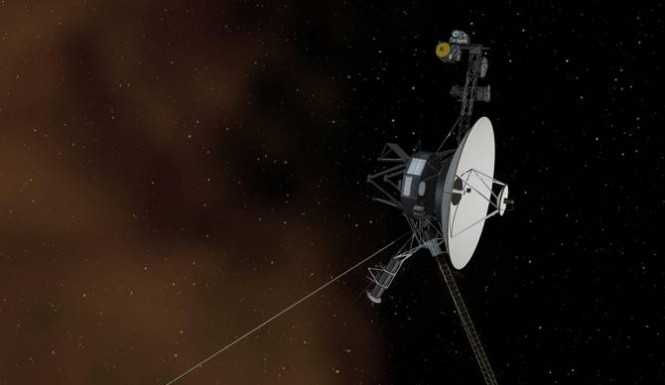Voyager 1, the only man-made object to leave the solar system, appears to still be riding a “tsunami” shock wave that was first detected in February, as it travels through the less-than-peaceful void of interstellar space.
According to NASA, Voyager has experienced three shock waves, one of which helped scientists confirm that the probe had moved out of the heliosphere and into interstellar space. According to new data, the “tsunami wave” that voyager first experienced earlier this year is still propagating outward, making it the longest lasting shock wave that researchers have yet detected.
A tsunami wave occurs after the Sun experiences a coronal mass ejection event, sending a magnetic cloud of plasma outward from its surface. When the wave of pressure generated by this event strikes the charged particles of plasma in interstellar space, it creates a shock wave that measurably upsets that plasma.
Don Gurnett, professor of physics at the University of Iowa in Iowa City, presented Voyager’s new data Monday, Dec. 15, at the American Geophysical Union meeting in San Francisco.
“Most people would have thought the interstellar medium would have been smooth and quiet. But these shock waves seem to be more common than we thought,” he observed.
It is unclear to researchers what the unusual length of the tsunami wave recorded by Voyager may mean, as Phys.org reports. They are also unsure how fast the wave is moving or how broad it is.
Ed Stone, project scientist for the Voyager mission based at California Institute of Technology in Pasadena, observed that the rising density of plasma around Voyager was key to the conclusion that the probe had moved out of the heliosphere.
“The density of the plasma is higher the farther Voyager goes,” he said.
Earlier this year, NASA released a variety of sounds recorded from their probes, including Voyager, using soundcloud. As the media previously reported, many of those probes are equipped with sensors that are able to convert electromagnetic vibrations into audible sounds. Voyager carries just such a sensor, which was used to detect the “tsunami waves” as they passed the probe on their way out of the heliosphere.

